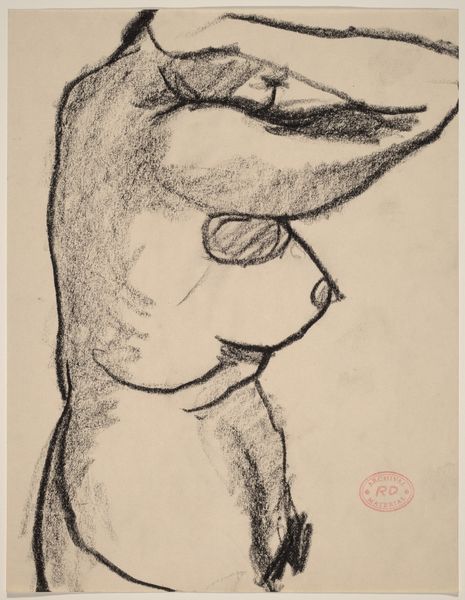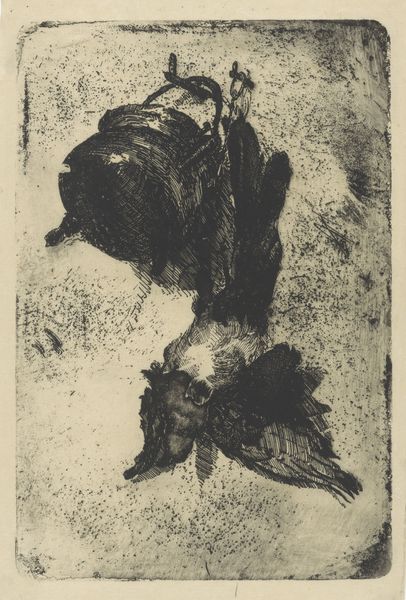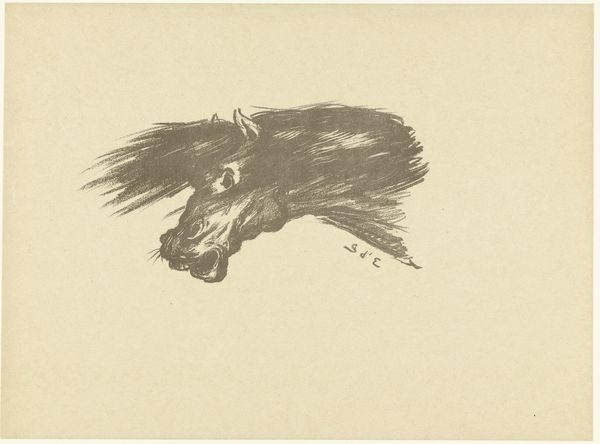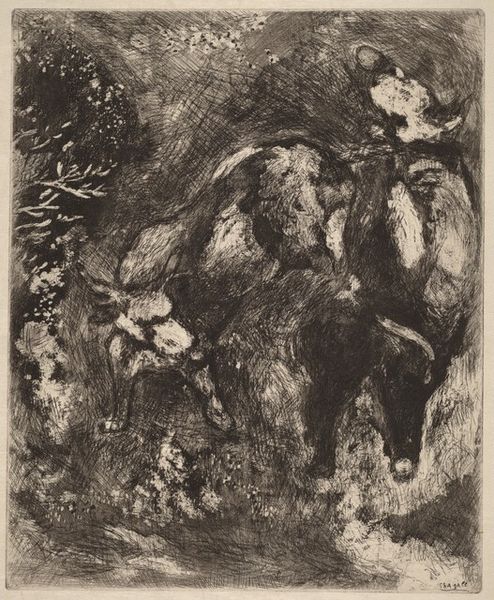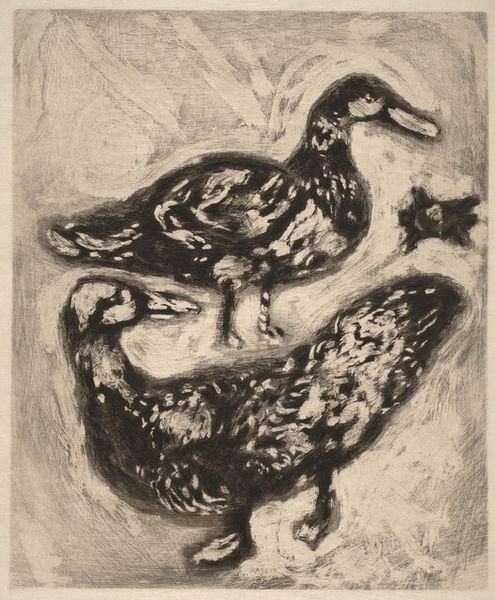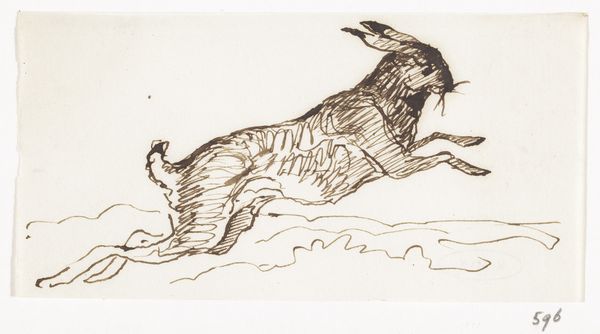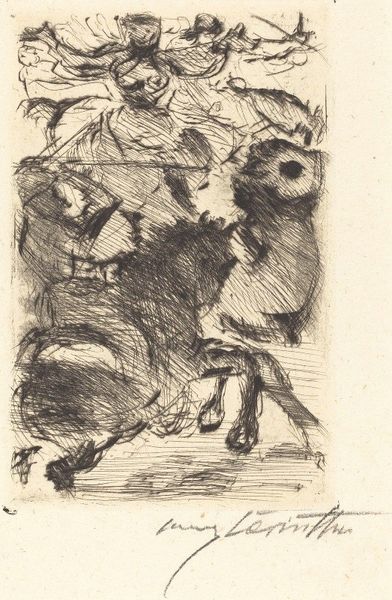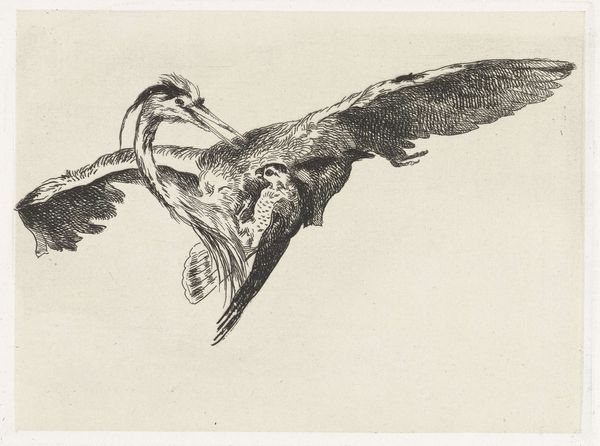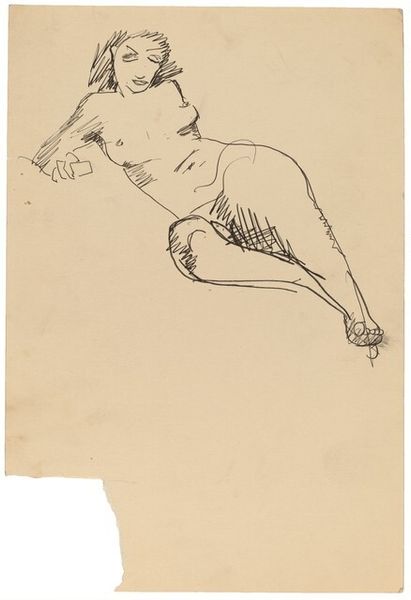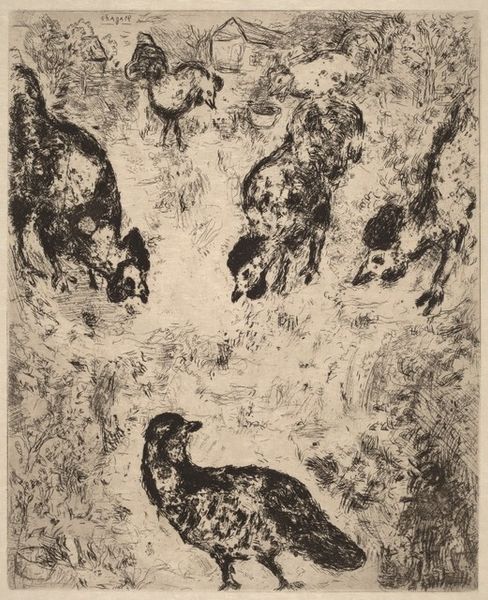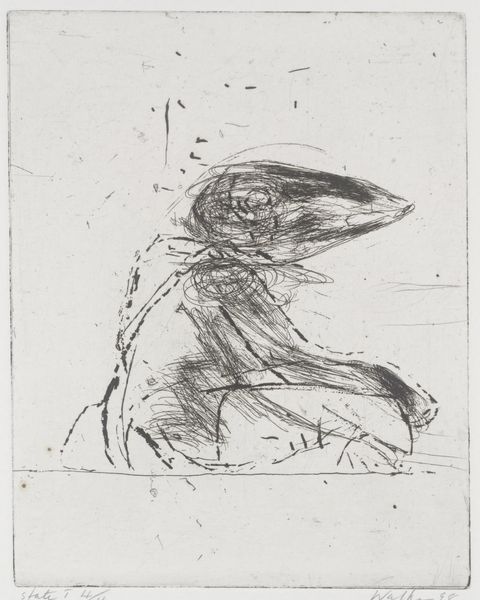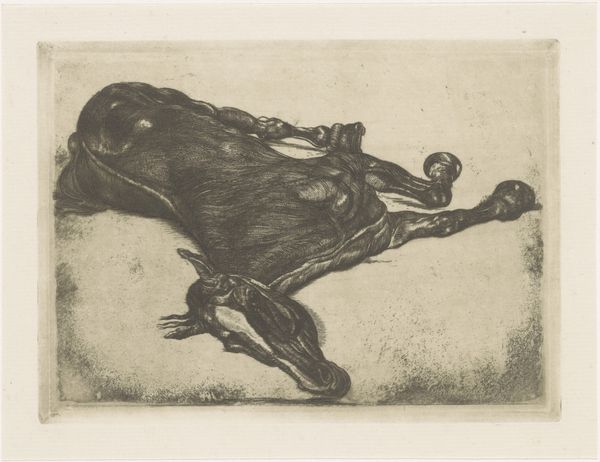
print, etching
# print
#
etching
#
landscape
#
figuration
#
surrealism
Copyright: National Gallery of Art: CC0 1.0
Editor: So, this is Chagall’s etching, "The Eagle and the Beetle," from somewhere around 1927-1930. It's… strange, a bit haunting even. I can't help but focus on this creature in the sky. Is it menacing, or is it protecting those tiny figures beneath? What do you see in this piece? Curator: Haunting is a good word! I think it is one of a series illustrating fables by Jean de La Fontaine, so what we are seeing could be an illustration of the fable where the eagle drops the beetle. But let's consider the personal symbolism at play here. This bird – a grotesque amalgam of creatures – might reflect Chagall’s anxieties. Is it a self-portrait, maybe? Look how vulnerable the little beetle is. Perhaps Chagall saw himself as that beetle, fragile amidst a chaotic world. Does that idea resonate with you at all? Editor: I see what you mean! Thinking about Chagall’s life, the upheaval and displacement he experienced, it makes sense that this bird carries that… unease. But then, is there also a sense of protection? Like the bird is guarding something precious even with all its strangeness? Curator: Exactly! Art, especially surrealism, isn't always about clear answers. It's about holding those contrasting feelings in suspension. It's about wrestling with the tensions that make us human. What do you think he hoped to achieve in the etching process versus with paint? Editor: Hmmm... Maybe etching helped him achieve this delicate balance, this fragility? Paint seems a bit… too solid for such a dreamlike image. This conversation has certainly given me new perspectives. I saw menace, but now I also see vulnerability and protection. Curator: And isn’t that the joy of art? Seeing it shift and change as we bring new perspectives to it, new lived experiences!
Comments
No comments
Be the first to comment and join the conversation on the ultimate creative platform.
